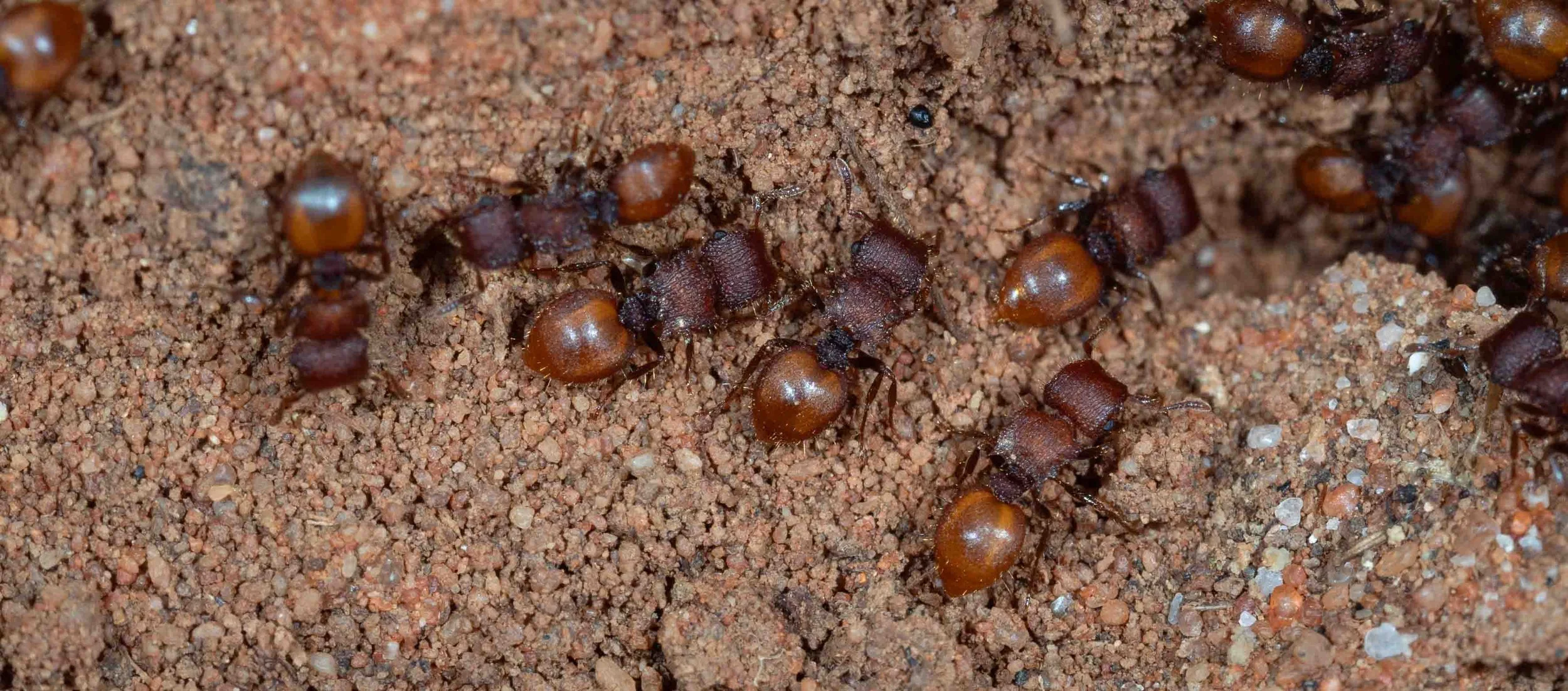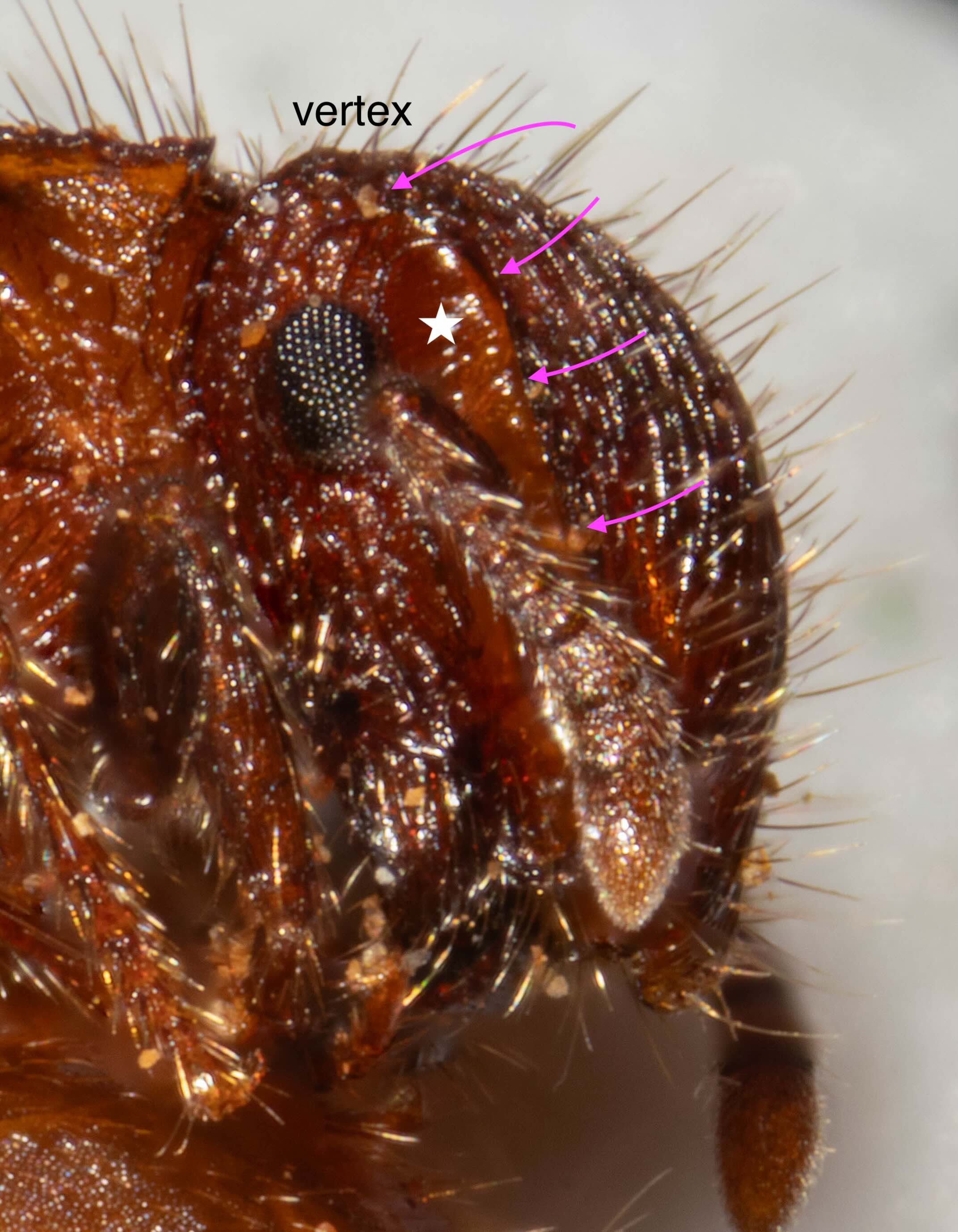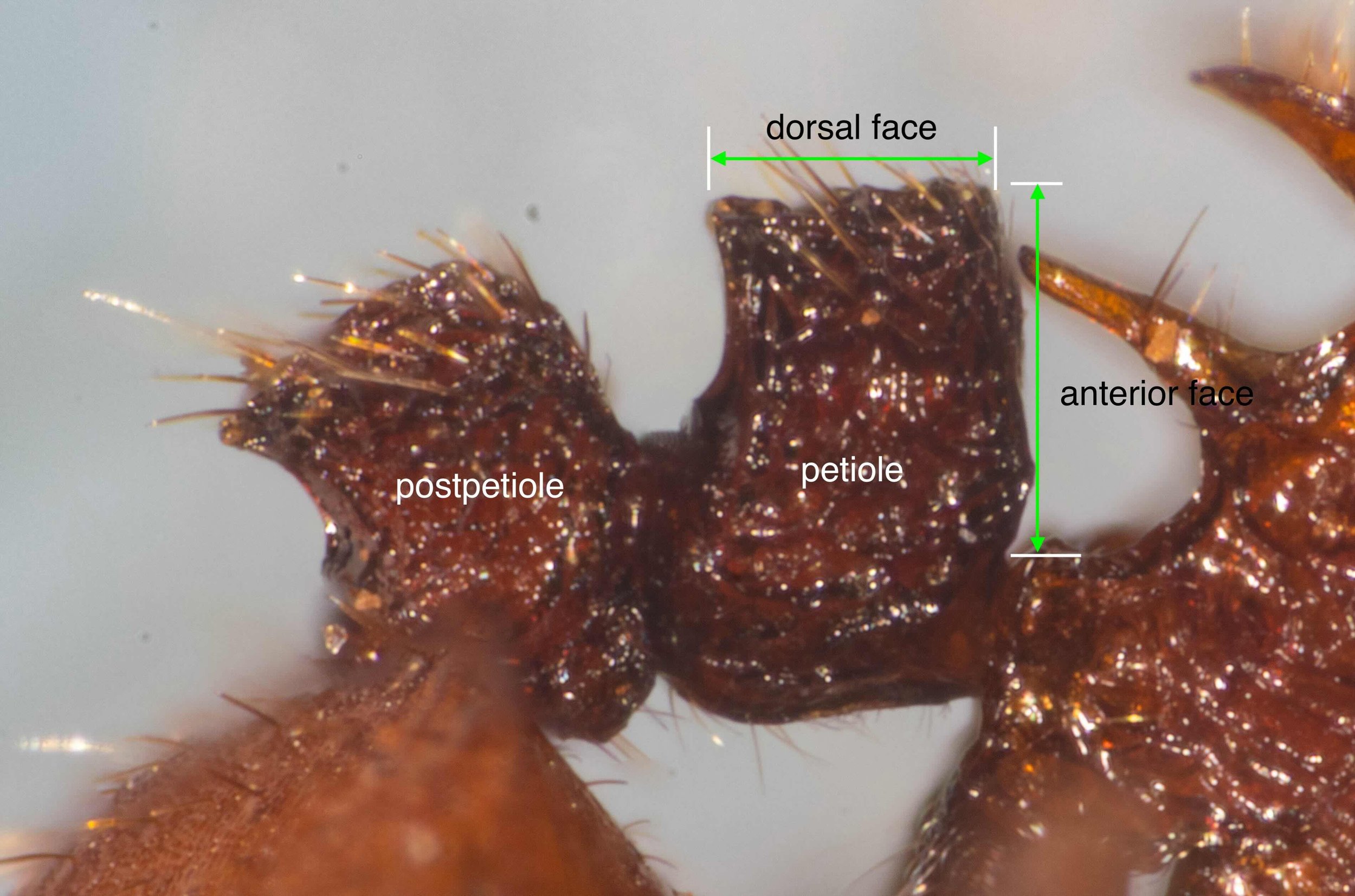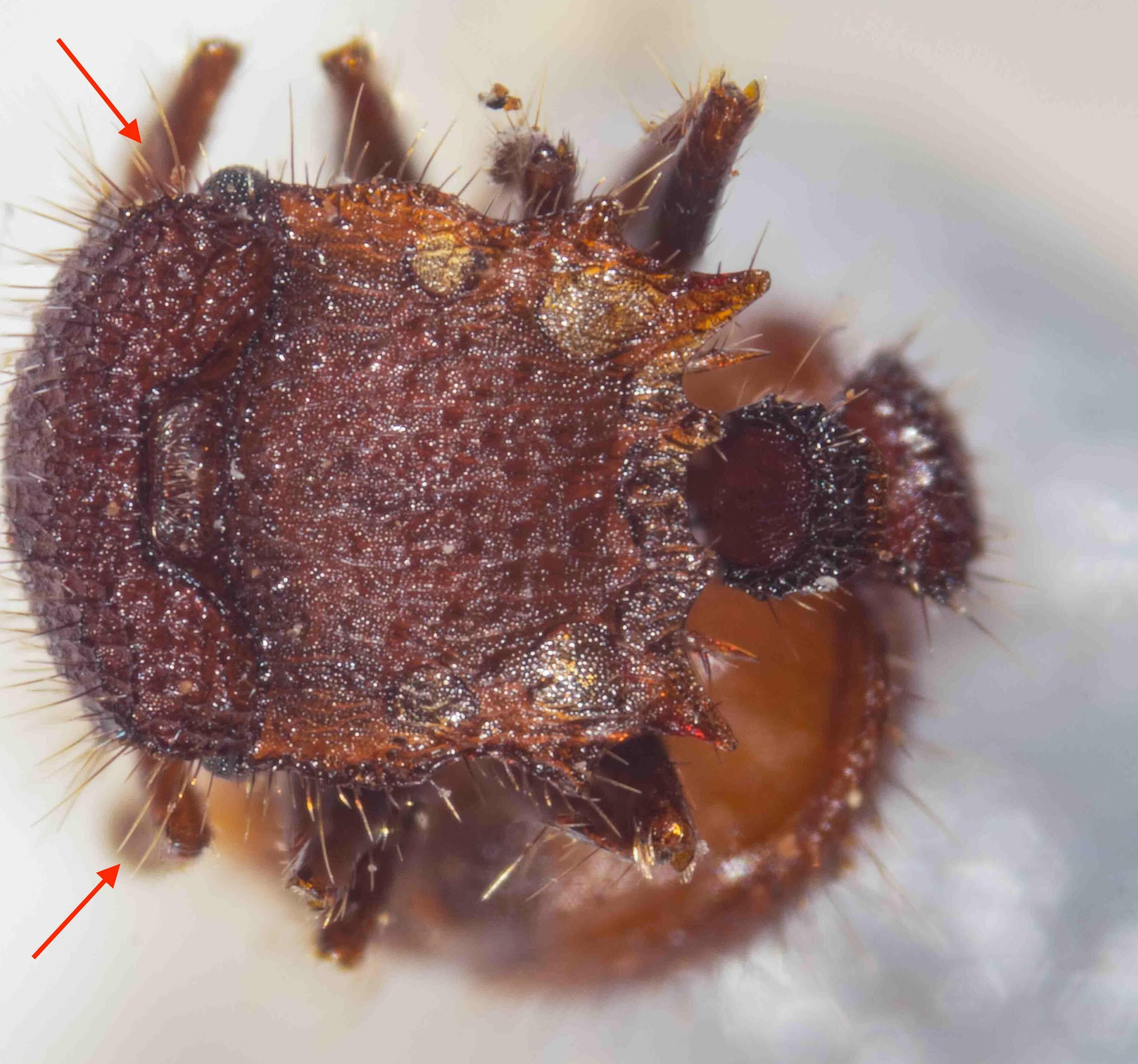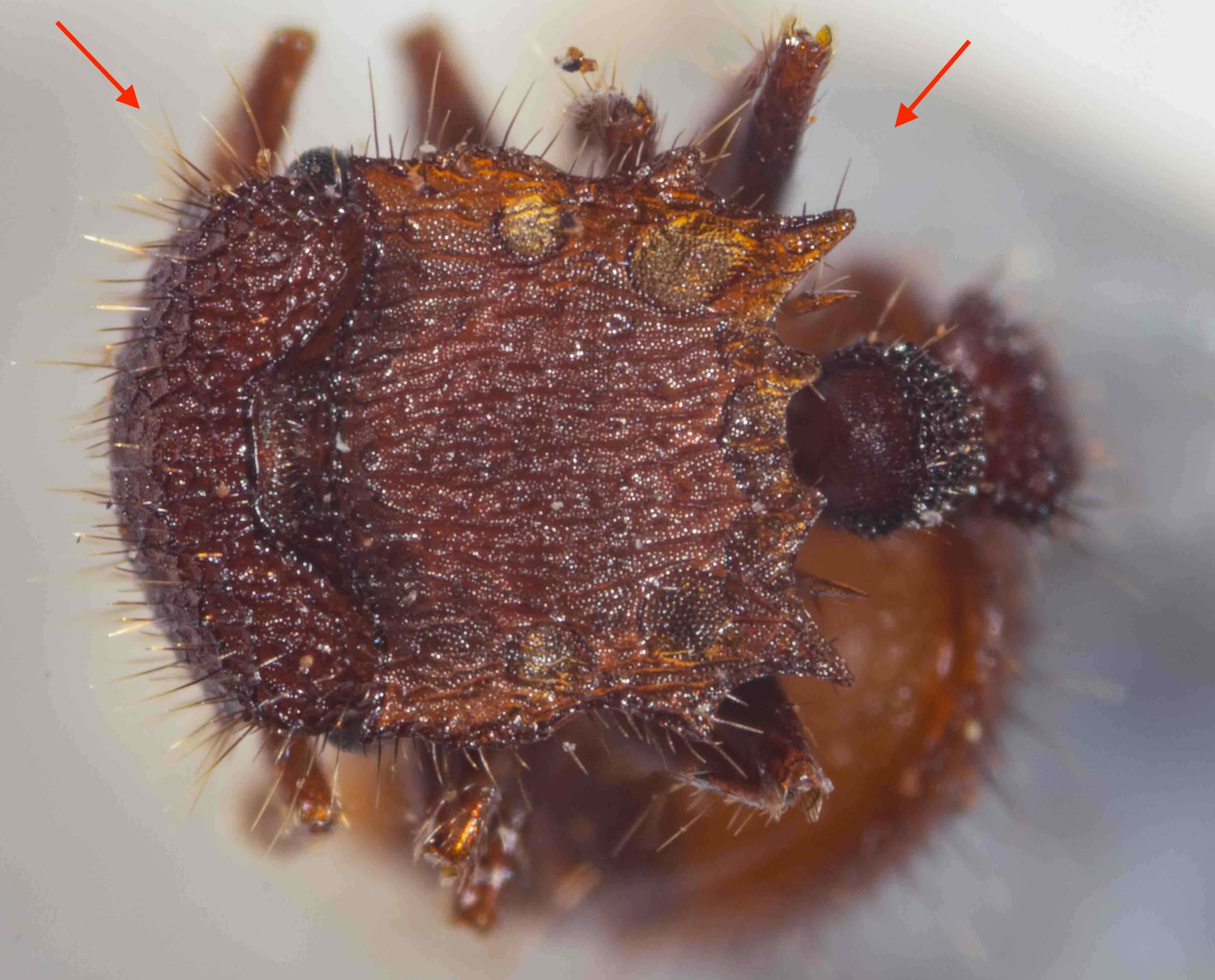Meranoplus (from the mallee)

Workbook
Summary
Based on the keys of Andersen (2006) and Heterick (2009, 2021), these little ants meet the criteria for Meranoplus oceanicus. They also appear a visual match to images of the holotype and to a second specimen identified by Schödl.
This is one of several species we observed (and collected) during our stay with Louise & Michael at ‘Explore the Mallee’, near Patchewollock in north-western Victoria, 9th April 2024.
I collected two workers from the nest above (labelled ‘Patchy #8 A & B) and preserved them (dry) for closer study.
Step 1: Meranoplus – ‘shield ants’
Although I didn’t immediately recognise this genus, a quick flick through iNaturalist ant sightings in the region was all it took to get to genus-level ID. And it turns out that these shield ants are quite unmistakable for any other taxon.
the broad promesonotal shield, with a varity of projections and flanges
the deep scrobes into which the antennae can be tucked away
the tendency of the ants to curl up when disturbed, their legs protected by the shield.
They are small, stout, slow-moving ants that are almost exclusively ground-foragers.
excerpt from Andersen 2006, page 157
Next step … can I get to species level ID?
Although AFD currently list just 48 species of Australian Meranoplus, Andersen (2006) estimates there are hundreds of undescribed species in collection.
Step 2: M. fenestratus group
Andersen (2006) examined many thousands of Meranoplus specimens in Australian collections, including the entire holdings of CSIRO Australian National Insect Collection (ANIC) and CSIRO Tropical Ecosystem Research Centre (TERC). These ants were collected from thousands of different sites, predominantly semi-arid regions of southern, eastern and northern Australia. So I think it’s fair to assume that Patchy 8 would be represented there somewhere!
Based on this study, Andersen (2006) grouped the hundreds of putative species into 18 “informal species groups” of Australian Meranoplus, within seven putative “radiations” (equivant to subgenera).” (p. 157).
I’m now confident that Patchy 8 is a good fit for the Meranoplus fenestratus radiation, which includes a single group: the Meranoplus fenestratus group, comprised of 28 species. Details below.
excerpt from Table 1 of Andersen 2006 (p. 166)
Patchy #8 meets the criteria for this group, as defined by both Andersen (2006) and Heterick (2009). That is:
frontal carina long … therefore not M. diversus group
frontal (antennal) lobes wide/broad, partly obscuring eyes in frontal view
petiole cuboidal (not low, triangle), & with posterior face sculptured throughout (not shiny) … therefore not M. hirsutus, M. armatus , or M. dimidiatus groups.
petiole without anteroventral tooth
postpetiole with concave posterior face
clypeus not projecting, strongly incurved & appearing emarginate … this is an unusual and distinctive condition within the genus.
So the next step …. which species complex?
Step 3: Meranoplus fenestratus species complex
Anderson (2006) provides a key to five species complexes within the M. fenestratus group.
Patchy 8 best matches the description the M. fenestratus species complex. That is:
shield obviously sculptured (not ‘generally smooth’), with punctations & sparse, fine ridges (‘rugae’)
posterior margin of shield with the translucent flange interrupted by a pair of short (yet obvious) median projections
postpetiole bent backwards, but not so strongly as for M. pubescens complex (see Andersen’s Fig 5, below)
postpetiole dorsal face nearly flat, although weakly convex anteriorly
petiole cuboidal:
not so tall looking (in profile) as M. pubescens (see Andersen’s Fig 5, below) … the length of the dorsal surface is 0.75 times the length of the anterior face (cf about 0.3 times in M. pubescens)
dorsal face straight, not oblique … so the angle antero-dorsal angle (in profile) is about 90 degrees
For a visual comparison, see the examples of M. pubescens and M. ferrugineus … including type specimens! It’s so nice to have free access to these, thanks to AntWeb.
Note that Andersen (2006) recognises 7 species within this complex – including M. fenestratus and M. oceanicus .
Next … can I get any closer to a species identification?
Step 4: Meranoplus oceanicus … most likely
Patchy 8 closely matches Meranoplus oceanicus, based upon images on AntWeb. In particular, note:
sculpturing of the head and shield
shape of the shield
shape of the petiole and postpetiole
The alternative, at least among the named species in this complex, is M. fenestratus. That species is very similar to M. oceanicus, although the sculpturing of the shield is less pronounced.
Indeed, Heterick (2009) regarded this as a key distinguishing feature, and their comments also suggest that M. fenestratus is more a western Australian species.
“The worker of Meranoplus fenestratus F. Smith has an almost smooth promesonotal shield. Meranoplus oceanicus F. Smith is closely related, but the dorsum of the promesonotal shield reveals distinct though slight reticulation. The two species are widespread in the SWBP, M. oceanicus also occurring in other states in southern Australia. (The type specimen for the latter taxon was described from Moreton Bay, Queensland.)” (Heterick, 2009. p. 156).
So, on balance, I suggest Patchy 8 = Meranoplus oceanicus.
References
Andersen, A.N. 2006. A systematic overview of Australian species of the myrmicine ant genus Meranoplus F.Smith, 1895 (Hymenoptera: Formicidae). Myrmecologische Nachrichten 8, 157-170. - available via AntWiki
Heterick, B.E. 2009. A guide to the ants of south-western Australia. Records of the Western Australian Museum, Supplement 76 - link
Heterick, B.E. 2021. A guide to the ants of Western Australia. Part 1: Systematics. Records of the Western Australian Museum, Supplement 86 - link
This is a workbook page … a part of our website where we record the observations and references used in making species identifications. The notes will not necessarily be complete. They are a record for our own use, but we are happy to share this information with others.

